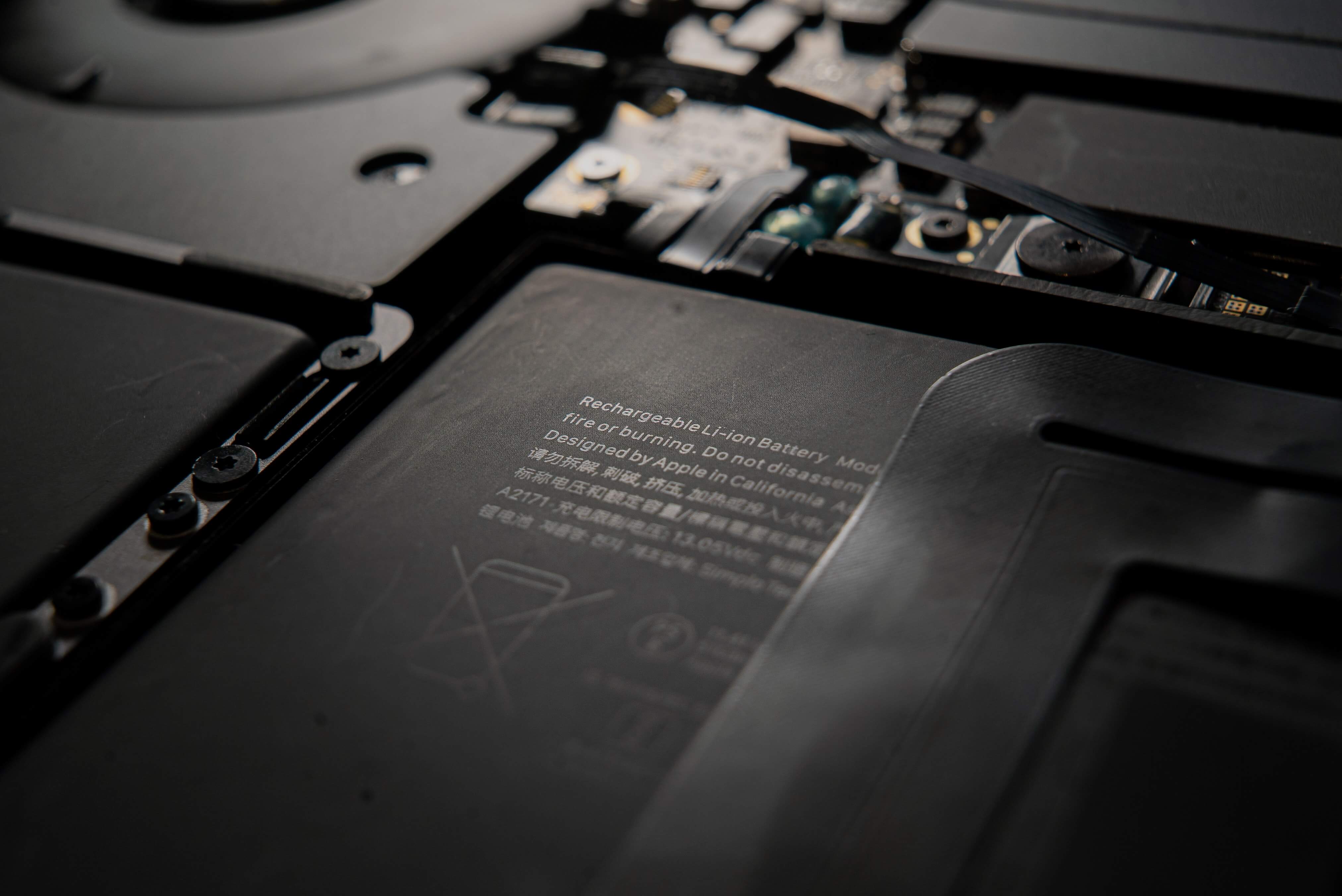Photo by Mika Baumeister on Unsplash
Lithium Battery (Li-ion) Q&A
Do lithium batteries need to be fully discharged before charging?
Previously, nickel-cadmium batteries had to be completely discharged before charging due to the memory effect. However, lithium batteries do not have this memory effect problem.
Lithium battery lifespan indicator: Cycle count
Generally, a lithium battery can last for about 500 cycles.
When the battery’s stored charge is discharged by 100%, it completes one charging cycle.
| Step | Battery Level | Charging | Discharging |
|---|---|---|---|
| 1 | 100% | 0% | 75% |
| 2 | 25% | 75% | 0% |
| 3 | 100% | 0% | 25% |
| 4 | 75% | 25% | 0% |
Regardless of time, as long as the discharge part accumulates 100%, it counts as one charging cycle. So in steps 1 and 3, discharging 75% and 25% respectively accumulates to 100% charging percentage, representing one charging cycle.

Therefore, regularly depleting the lithium battery will quickly use up its charging cycles, causing it to fail sooner.
It’s best to charge when the battery level is below 30%, as low battery levels are more damaging to battery life than high levels.
How to maintain lithium batteries?
1. Don’t use until completely drained
Using until fully drained will use up charging cycles. Due to the physical characteristics of lithium batteries, they have a self-protection mechanism. When the internal voltage drops to a certain level, the battery will shut down, leading to a “dead” state, often called a false failure. Excessive depletion of the battery causes voltage to drop too low, preventing the lithium battery from initiating charging mode, so excessively low charge can easily damage the battery.
2. Use appropriately, charge when possible
Never using the battery and not allowing power consumption will also cause it to fail quickly. So use it normally, but if you have the opportunity to charge during use, do so to reduce the occurrence of charging cycles.
Lithium batteries aren’t afraid of charging; they’re afraid of being uncharged.
3. Lithium batteries don’t fear charging, but fear heat, overcharging, and drops
If poor heat dissipation causes the battery to swell, it’s recommended to replace the battery as soon as possible.
Should lithium batteries be unplugged immediately after full charge?
Some people suggest not charging phones overnight and unplugging them as soon as they’re full. This is incorrect.
When lithium batteries are fully charged, devices usually have a mechanism to stop charging and use line power, avoiding damage from overcharging.
Unplugging consumes battery power, which increases the battery cycle count. Keeping it plugged in at 100% is less harmful to the battery than unplugging it.
Why do lithium batteries in true wireless Bluetooth earphones easily fail?
If earphones have 5 hours of battery life and you use them for the full 5 hours before charging when notified of low battery, this frequent battery depletion and multiple charging cycles lead to easy failure.
Must new electronic devices be fully charged before use?
It’s not necessary. The main concern is avoiding too little power in the lithium battery, which could trigger the protection mechanism. If the charge isn’t too low, it can be used directly.
Will replacing the battery in old electronics greatly improve performance?
It depends on the brand. For Apple products, replacing the battery helps. Apple starts limiting device performance when battery health drops below 70%, as a protection mechanism for both the battery and the device.
When battery health is below 70%, it’s difficult to accurately detect the correct health. If power supply is insufficient and the CPU suddenly needs more power, the lithium battery’s self-protection mechanism will shut off power, causing the device to turn off.
For Apple products with battery health below 80%, if you notice the computer or tablet running slower, replacing the battery can restore performance.
What’s the optimal charge range for lithium batteries?
The optimal range is 25% to 75%. If your battery cycle range is 0% to 75%, the battery’s cycle count can increase to about 2000 times. So it’s indeed good not to keep the battery at 100% constantly.
Phone manufacturers implement protection mechanisms to prevent battery overcharging, so while not charging to 100% can increase lifespan, it’s not necessary to affect your product experience for the sake of battery life. Charge when it’s low, don’t overthink it.
How to store batteries long-term?
It’s recommended to charge/discharge the battery to 50% before storage. Avoid high-temperature environments to prevent reduced battery life.
Should you avoid using your phone while charging?
Using your phone while charging can harm the battery because lithium batteries are sensitive to high temperatures. During charging, energy conversion generates heat.
Using the phone, especially for gaming, also generates heat. Both factors cause the battery temperature to rise, reducing battery life.
Lithium Battery Characteristics
Batteries have a lifespan
Batteries are consumable items that will eventually deteriorate, and the usage environment also affects battery life. So when a battery has been used for a long time and doesn’t hold a charge well, replace it if possible.
Batteries slowly lose charge even when not in use
Batteries slowly discharge even when not in use. To avoid complete depletion, charge them occasionally when stored for a while to prevent low voltage or excessive charging cycles, which could render the battery useless. So remember to charge your batteries from time to time.
